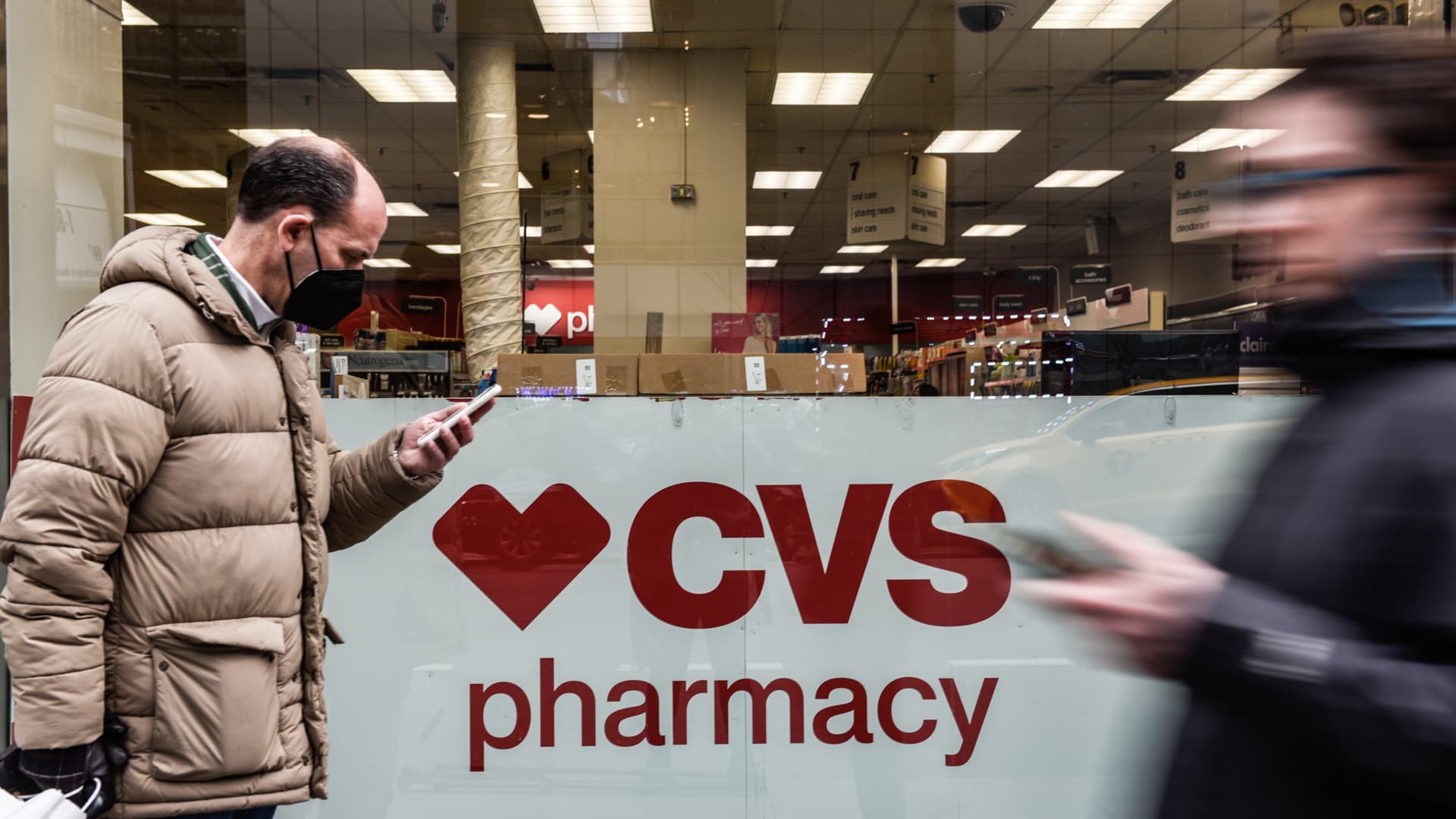CVS Health on Wednesday reported fourth-quarter revenue and adjusted earnings that topped expectations, but the company cut its full-year profit outlook, citing higher medical costs that are dogging the broader insurance industry.
The company lowered its 2024 adjusted earnings forecast to at least $8.30 per share, down from a previous guidance of at least $8.50 per share. Analysts surveyed by LSEG were expecting full-year adjusted earnings of $8.49 per share.
CVS also cut its unadjusted earnings guidance to $7.06 per share, down from at least $7.26 per share.
The company said its new guidance follows a review of its medical cost trend analysis for the fourth quarter and a recognition of the “potential implications” for elevated medical cost trends in 2024. CVS owns health insurer Aetna.
Insurers such as Humana have been seeing medical costs spike as an increasing number of older adults return to hospitals to undergo procedures they had delayed during the pandemic, such as joint and hip replacements.
Here’s what CVS reported for the fourth quarter compared with what Wall Street was expecting, based on a survey of analysts by LSEG, formerly known as Refinitiv:
- Earnings per share: $2.12 adjusted vs. $1.99 expected
- Revenue: $93.81 billion vs. $90.41 billion expected
CVS booked sales of $93.81 billion for the quarter, up almost 12% from the same period a year ago. That increase was mainly driven by strength in its health services business.
While CVS beat earnings expectations, its profit shrank from the prior year.
The company reported net income of $2.05 billion, or $1.58 per share, for the fourth quarter. That compares with a net income of $2.33 billion, or $1.77 per share, for the same period a year ago.
Excluding certain items, such as amortization of intangible assets and capital losses, adjusted earnings per share were $2.12 for the quarter.
The fourth-quarter results come two months after CVS said it will revamp how it prices prescription drugs and scrap a complex model that typically sets how much pharmacies get reimbursed and what patients pay for those medications. The company plans to launch a new model, called CostVantage, for how payors will reimburse its pharmacies. That model will first apply to commercial payors starting in 2025.
The results also come as CVS pushes to transform from a major drugstore chain into a large health-care company. The company deepened that push over the last year with its nearly $8 billion acquisition of health-care provider Signify Health and a $10.6 billion deal to buy Oak Street Health, which operates primary-care clinics for seniors.
CVS will hold an earnings call with investors at 8:00 a.m. ET on Wednesday.
Strength in health services business
The company’s health services segment generated $49.15 billion in revenue for the quarter, a 12.3% increase compared with the same quarter in 2022.
The division includes CVS Caremark, which negotiates drug discounts with manufacturers on behalf of insurance plans, as well as health-care services delivered in medical clinics, through telehealth and at home.
Those sales blew past analysts’ estimate of $46.35 billion in revenue for the period, according to StreetAccount.
CVS said the increase was driven in part by growth in specialty pharmacy services, which help patients who are suffering from complex disorders and require specialized therapies. The company added that brand inflation and its recent acquisitions also boosted the segment results.
The health services division processed 600.8 million pharmacy claims during the quarter, which is flat from the year-ago period.
Other divisions show growth
CVS’s health insurance segment generated $26.73 billion during the quarter, a roughly 16% increase from the fourth quarter of 2022. The division includes plans by Aetna for the Affordable Care Act, Medicare Advantage and Medicaid, as well as dental and vision.
Sales fell short of analysts’ estimate of $27.09 billion for the quarter, according to StreetAccount.
The insurance segment’s medical benefit ratio — a measure of total medical expenses paid relative to premiums collected — increased to 88.5% from 85.8% a year earlier. A lower ratio typically indicates that the company collected more in premiums than it paid out in benefits, resulting in higher profitability.
Analysts had expected that ratio to be 88.1%, according to StreetAccount estimates.
CVS said the increase was mainly driven by increased utilization in Medicare Advantage, including outpatient and supplemental care benefits. Commercial and Medicaid use also returned to normalized levels, the company added.
The company’s pharmacy and consumer wellness division booked $31.19 billion in sales for the quarter, up 8.6% from the year-ago period. That segment dispenses prescriptions in CVS’s more than 9,000 brick-and-mortar retail pharmacies and provides other pharmacy services, such as diagnostic testing and vaccination.
Analysts had expected the division to bring in $30.15 billion in sales, according to StreetAccount.
CVS said the increase was driven by heightened prescription volume, brand inflation and increased contributions from vaccinations, among others factors.
The division filled 431.5 million prescriptions during the quarter, up slightly from 423.4 million for the year-earlier period.
Same-store sales for CVS grew 11.3% during the three-month period compared with the same time a year earlier, but not equally across the store. Same-store sales jumped 15.5% in the pharmacy division, but were down by 3.1% in the front of the store.
